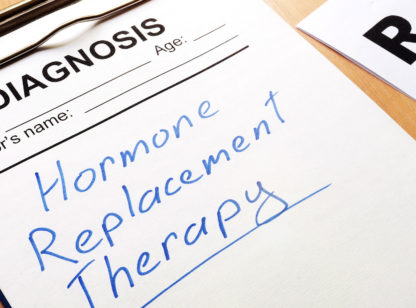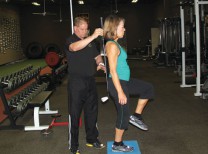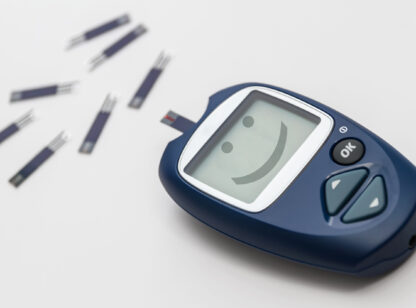Every woman experiences menopause differently. For some, it passes quickly and the symptoms are mild, while others experience aggressive changes that include hot flashes and mood swings. Weight gain and muscle loss are also common during this transformation. The good news is that exercise–before, during and after–can help stave off many of these effects.
Strength training, cardio fitness and yoga all offer benefits specific to the changes your body experiences during this time.
Strength training is linked to high bone mineral density in adults of all ages and both sexes. Since osteoporosis, a type of skeletal deterioration characterized by decreasing bone density that weakens the bone structure, is more common in menopausal women, weight training is beneficial for women before and after menopause. In their book Action Plan for Menopause, Barbara Bushman and Janice Clark-Young state that osteoporosis is partially preventable with adequate amounts of calcium in the diet, and that the effects are enhanced when combined with progressive high-intensity resistance training. They further explain that dense, healthy bones are created in a constant rebuilding process as osteoclasts (cells that break down bone) and are replaced by osteoblasts (cells that form bone). One way to stimulate the osteoblasts is to repeatedly use greater-than-normal loads on the bones. The amount of bone building is relative to the amount of overload on the bone. So within limits, increases in the overload will cause greater amounts of bone formation, which develops on the bone’s outer surface, creating stronger bones that are less likely to fracture.
Incremental bone formation occurs within 8 to 12 weeks of strength training, but four to six months of progressive resistance training is the minimum amount of time needed to increase bone mineral density. They go on to note that the greatest increases in bone density occur in previously inactive postmenopausal women who participate in resistance training. So it’s never too late to start!
Strength training also provides the benefits of reduced risk of adult-onset diabetes, lower blood pressure, decreased arthritis pain, and the maintenance of or improvement in lower back health.
Cardio. The American Heart Association reports that as you enter menopause your risk for cardiovascular disease increases. Estrogen levels, which are thought to protect your heart, drop during menopause. Thus, it is important to protect your heart through physical activity. Cardio exercise will also help burn off those extra pounds and boost your metabolism, giving you back the energy you feel you have lost. Pick an exercise you enjoy – walking, biking, hiking or hitting the gym – and practice cardio for 30 minutes 3x a week!
Yoga. The practice of yoga and holding poses can offer relief, calm your nerves, and center your mind. Yoga is a natural complement to strength training and cardio as it increases flexibility, tones the body and focuses the mind.
Check with your doctor before starting any weight training program, particularly if you have any pre-existing conditions. When starting strength training, it is recommended that you schedule a session with a personal trainer to learn proper form as lifting weights incorrectly can lead to serious injury.
Beginning an exercise program before menopause will help prepare your body for the changes you may experience during and after this life transition.
Dawn Berger is an ISSA Certified Personal Trainer with C-Fitness Ladies Workout in Palm Desert and can be reached at (760) 636.4177.













































Comments (0)